Hi Team,
I want to check spec with you. I find there is no max value showing on datasheet. If our tw need to > 20ms which means that we don't need to connect Rext/Cext, is it correct? Thanks.
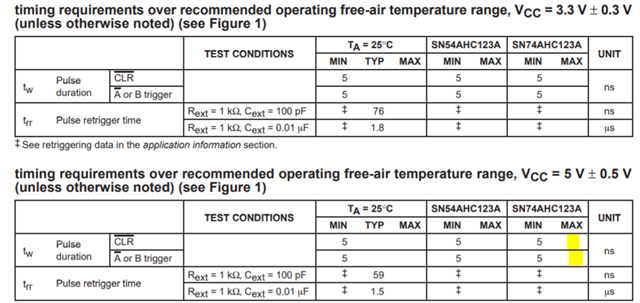
Regards,
Roy
This thread has been locked.
If you have a related question, please click the "Ask a related question" button in the top right corner. The newly created question will be automatically linked to this question.
Hi Team,
I want to check spec with you. I find there is no max value showing on datasheet. If our tw need to > 20ms which means that we don't need to connect Rext/Cext, is it correct? Thanks.

Regards,
Roy
Hello Roy,
Are you saying that you want the output Q pulse width to be greater than 20ms?
You must have an Rext and Cext connected and all pins configured appropriately and then follow figure 5 to get the appropriate/desired timing. It will take somewhat of a large RT and CT to get that large of a pulse., and the pulse will likely vary in its precision quite a bit, but if you just need a pulse longer than 20ms than getting an exact number is not that important.
Best,
Michael
Hi Michael,
Thanks for info. I found below spec. The spec shows the max time duration. Can you let me know the tw(max) is related to Rext and Cext?
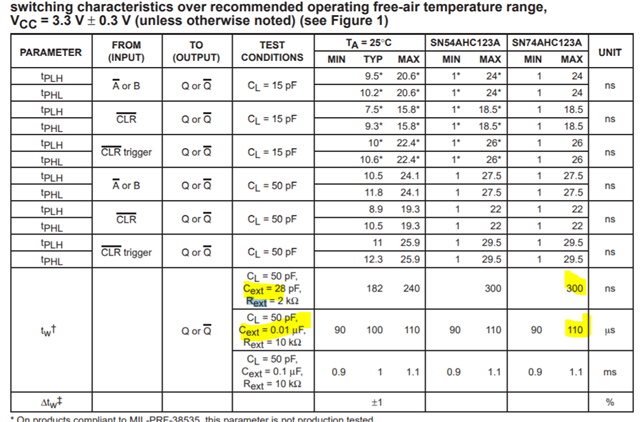
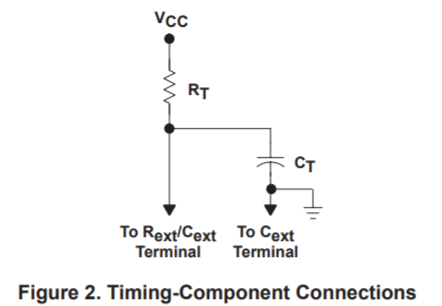
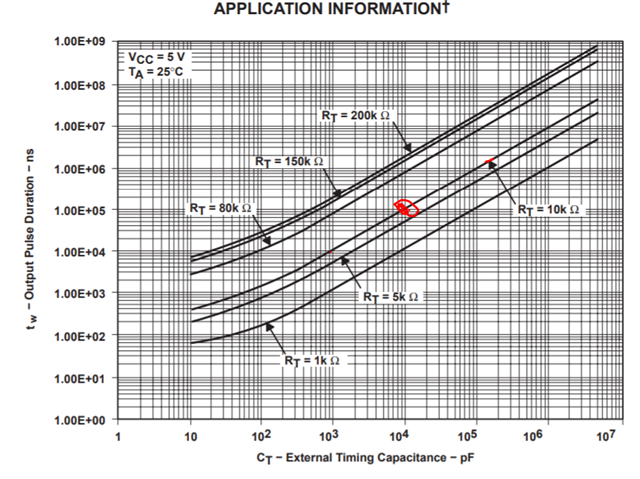
If we want to tw > 20ms, I need to set Rt = 200k and Ct at least larger than 10^5 pF. Is it correct?
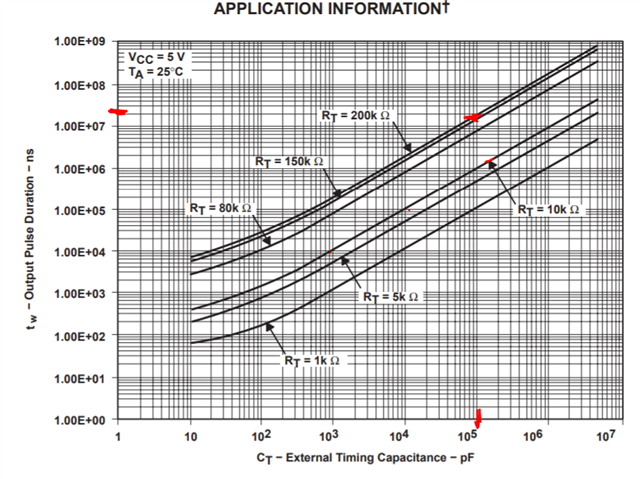
Roy
Hi Roy,
The output pulse width is tw = K * R * C
The maximum output pulse width you highlighted was measured across PVT and is not something you can calculate. It is only given for the values you highlighted.
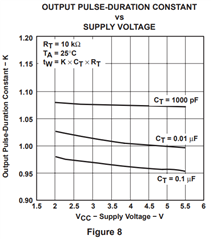
As C gets larger, K generally gets closer to 1, however with this device it appears that it approaches closer to 0.9.
So, for example, if you were to set C = 1uF, then
tw = 20ms = K * R * C = 0.9 * R * 1uF
R = 20ms / (0.9 * 1uF) = 22.2 kohm
A larger value of resistor will provide a larger delay, so to ensure tw > 20ms, I would use a 33 kohm resistor.
Hi Emrys,
Thanks for information. Is it possible that set Tw larger than 1s if we set appropriate R/C value?
Roy